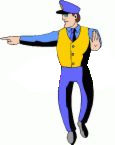
ENFORCEMENT AT INTERSECTIONS
Enforcement at intersections is an important part of keeping roads safe for all users. Drivers must be aware of their surroundings and obey traffic laws to ensure the safety of everyone. Enforcement can also help reduce traffic congestion and deter future violations. By following the law, drivers can help create a safer road environment for all.
TRAFFIC OFFICERS
When you approach a police officers be sure to follow his directions. If he motions you to stop at an intersection, you must stop, even if the light is green.
Enforcement at intersections can involve police officers or automated cameras. Traffic laws are enforced on a case-by-case basis and can vary from one jurisdiction to another. In some cases, vehicles may be ticketed for running a red light or speeding.
Police officers can also be used to enforce intersection safety. Officers may be stationed at intersections to observe traffic and issue tickets to drivers who violate the law. This type of enforcement can help reduce congestion, increase safety, and deter future violations.
Automated cameras are also used to enforce intersection safety. Automated cameras can detect vehicles that run a red light, exceed the speed limit, or fail to yield the right of way. The cameras often use infrared technology to detect the violation and take a photograph of the vehicle. The vehicle owner then receives a ticket in the mail, which includes a fine and possible points on their license.
Fire department personnel, crossing guards and highway work flag persons are also authorized to control traffic. Do not drive into a dangerous situation such as head-on traffic even if the officer directs you to do so. He or she may not be aware of the danger.
LAW ENFORCEMENT VEHICLES AT INTERSECTIONS
Law enforcement vehicles at intersections are becoming increasingly common in cities and towns across the United States. These vehicles are typically marked police cars that are used by law enforcement personnel to monitor traffic and ensure that drivers are following the rules of the road. The presence of law enforcement vehicles at intersections can help to deter reckless driving and promote public safety.
The use of law enforcement vehicles at intersections is typically done to reduce the amount of traffic violations that occur. This is because when drivers see a police car in the vicinity, they are more likely to drive more safely and obey the speed limit. Additionally, law enforcement vehicles can act as a visual reminder to drivers that they are being watched and that they may be held accountable for their actions.
The use of law enforcement vehicles at intersections can also help to create a safer environment for pedestrians. By providing a visible presence in the area, drivers are more likely to be careful when making turns and be aware of any pedestrians that may be crossing the street. This can help to make intersections safer for everyone, which is especially important in areas where there is a lot of foot traffic.
Finally, law enforcement vehicles at intersections can also be used to monitor traffic conditions and help to provide better traffic flow. This can be done by monitoring the speed of vehicles, the amount of vehicles in the area, and the general flow of traffic. This information can then be used to adjust traffic signals and improve traffic flow, which can ultimately make intersections safer for everyone.
Overall, the presence of law enforcement vehicles at intersections can help to ensure that drivers follow the rules of the road, make intersections safer for pedestrians, and even help to improve traffic flow. This is why it’s important for cities and towns to consider investing in these vehicles and implementing them in their areas.















